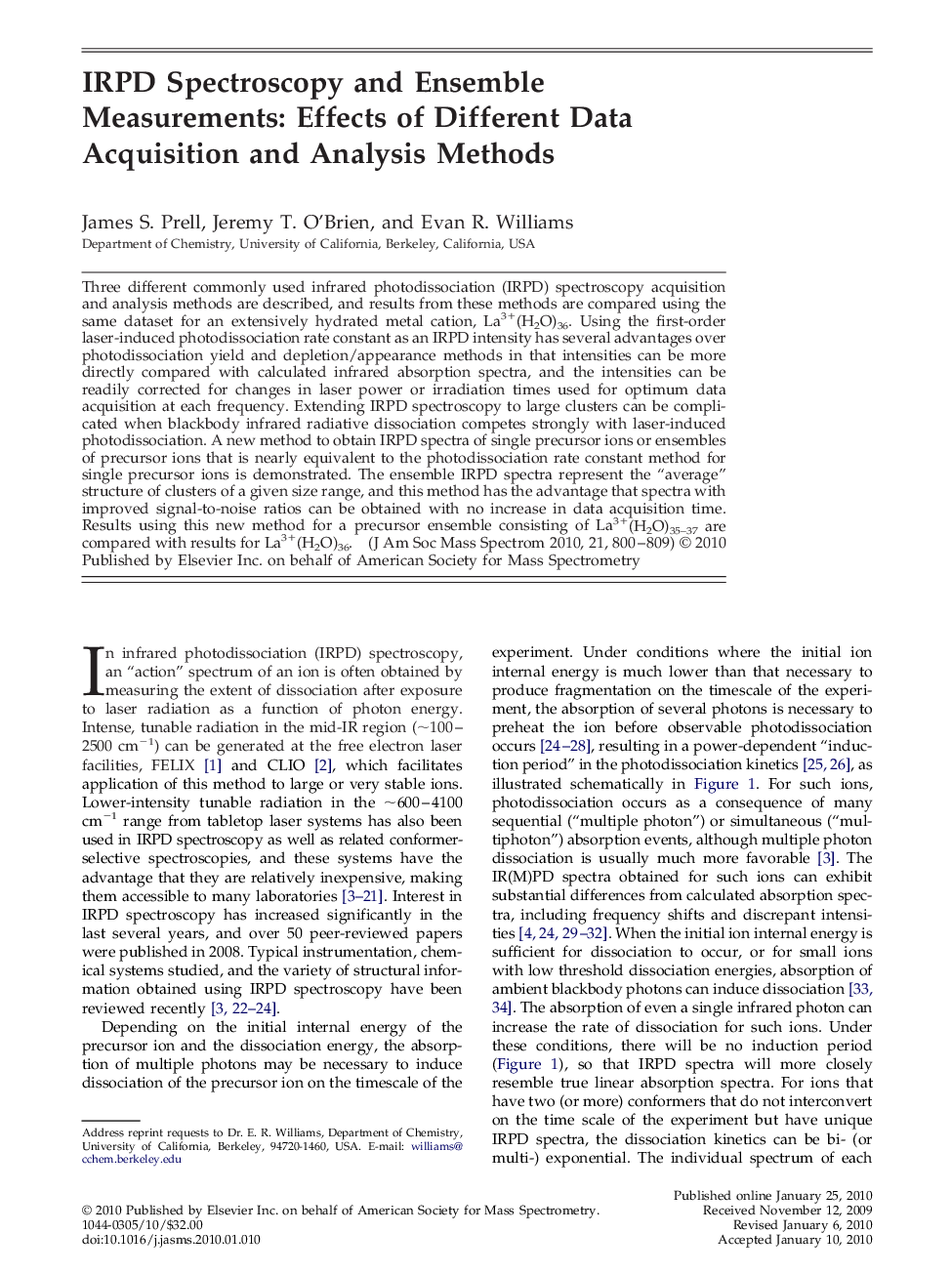| کد مقاله | کد نشریه | سال انتشار | مقاله انگلیسی | نسخه تمام متن |
|---|---|---|---|---|
| 1195140 | 964282 | 2010 | 10 صفحه PDF | دانلود رایگان |

Three different commonly used infrared photodissociation (IRPD) spectroscopy acquisition and analysis methods are described, and results from these methods are compared using the same dataset for an extensively hydrated metal cation, La3+(H2O)36. Using the first-order laser-induced photodissociation rate constant as an IRPD intensity has several advantages over photodissociation yield and depletion/appearance methods in that intensities can be more directly compared with calculated infrared absorption spectra, and the intensities can be readily corrected for changes in laser power or irradiation times used for optimum data acquisition at each frequency. Extending IRPD spectroscopy to large clusters can be complicated when blackbody infrared radiative dissociation competes strongly with laser-induced photodissociation. A new method to obtain IRPD spectra of single precursor ions or ensembles of precursor ions that is nearly equivalent to the photodissociation rate constant method for single precursor ions is demonstrated. The ensemble IRPD spectra represent the “average” structure of clusters of a given size range, and this method has the advantage that spectra with improved signal-to-noise ratios can be obtained with no increase in data acquisition time. Results using this new method for a precursor ensemble consisting of La3+(H2O)35–37 are compared with results for La3+(H2O)36.
Graphical AbstractA new weighted-average method is introduced for obtaining IRPD spectra of large hydrated ion ensembles and is compared with other analysis methods.Figure optionsDownload high-quality image (98 K)Download as PowerPoint slide
Journal: Journal of the American Society for Mass Spectrometry - Volume 21, Issue 5, May 2010, Pages 800–809